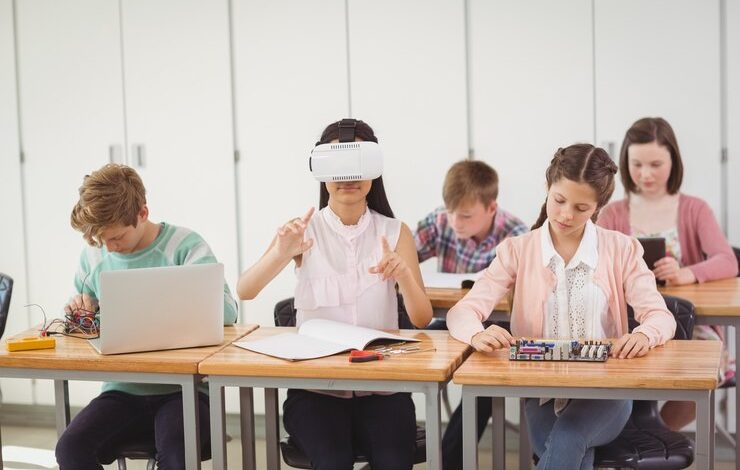How Technology is Reshaping the Classroom

Advancing Education
The education system has undergone significant changes from the early 1990s to the modern day, with the introduction of new technologies, teaching techniques, and learning tools that have revolutionized how we teach and learn. In this article, we will examine the changes in the education system, especially in the learning tools used in the 1990s, and how some of those tools have become obsolete or replaced with modern tools or technology.
The 1990s was a time when the internet was still in its infancy, and computers were just starting to make their way into schools. The primary learning tools of the time were textbooks, chalkboards, overhead projectors, and cassette tapes. Teachers relied heavily on lectures and note-taking, and students had limited access to information beyond what was presented in the classroom.
The Rise of Technology
The introduction of computers in the 1990s marked a significant turning point in the education system. The first computers were used primarily for word processing, and teachers used them to create and print worksheets and quizzes. The advent of the internet in the mid-1990s opened up a whole new world of information for teachers and students alike. The internet provided access to a wealth of information, including online encyclopedias, articles, and research papers. This made it easier for teachers to supplement their lessons with additional information and for students to research and complete assignments.
As technology advanced, so did the learning tools used in the classroom. Overhead projectors were replaced with digital projectors, and cassette tapes were replaced with CDs and DVDs. Interactive whiteboards and digital tablets became popular teaching tools, allowing teachers to create engaging and interactive lessons.
In addition to the use of advanced technology, modern-day classrooms have seen a significant shift towards the use of digital devices, such as laptops and tablets. With the widespread availability of affordable devices and the rise of online learning platforms, many schools have replaced traditional paper and pencils with laptops provided by the school.
This move towards digital devices has many advantages. For one, it eliminates the need for textbooks, which can be expensive and quickly outdated. Instead, students can access up-to-date digital resources, including e-books, online research databases, and educational software, which provide a more dynamic and interactive learning experience.
Also, digital devices can help level the playing field for students who may not have access to technology at home. Schools can provide devices to students who might be unable to afford them, ensuring everyone has equal access to technology and digital resources.
While there are concerns about the potential distractions that digital devices can pose in the classroom, many teachers are finding ways to integrate technology to enhance the learning experience. For example, some classrooms have adopted a “flipped classroom” model, where students watch video lectures at home and use classroom time for collaborative activities and group discussions.
Education Software
In recent years, there has been a surge in the use of educational technology, including online learning platforms and educational apps. Tools like assessment software higher education provide students with a more personalized learning experience, allowing them to learn at their own pace and in their own style. Additionally, virtual and augmented reality technologies have been introduced in some classrooms, providing students with immersive learning experiences that were previously impossible.
While the use of technology has undoubtedly improved the education system, there are concerns that too much reliance on technology can be detrimental to the learning process. Some argue that technology can make students overly reliant on it, and they may not develop the critical thinking skills necessary for future success.
Conclusion
The education system has come a long way since the 1990s, with the introduction of new technologies and learning tools that have revolutionized the way we teach and learn. While some of the tools used in the 1990s have become obsolete or replaced with modern tools or technology, there are still some fundamental aspects of education that remain unchanged.
Ultimately, the education system’s success depends on finding the right balance between traditional teaching methods and technology to provide a well-rounded and engaging learning experience for students. As such, it is difficult to say whether education in the 1990s or modern-day education is better, as each era has its unique strengths and weaknesses.
Looking for more great tips and trends for improving blog





